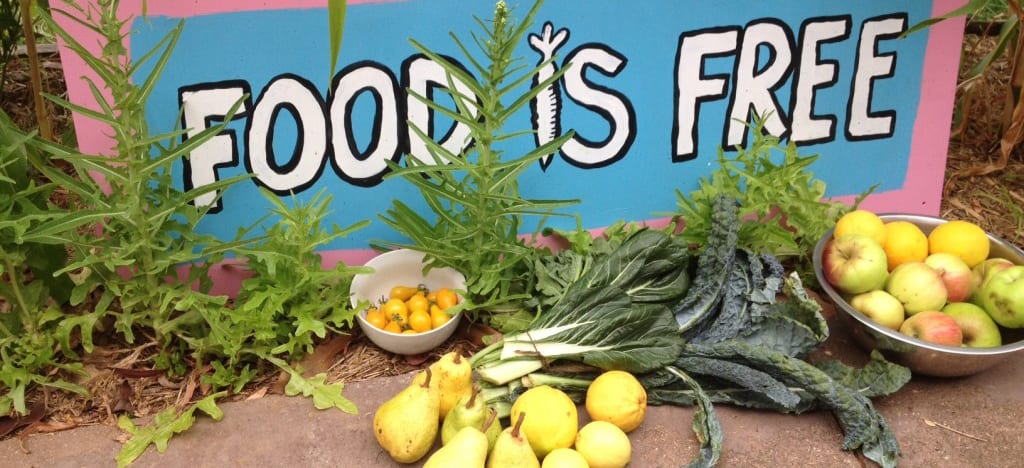New Global Gardening Trend Aims To Make Food Free
Global Gardening Trend Aims To Make Food Free
Imagine your neighborhood has just had a makeover. Instead of manicured lawns, neighborhood streets and community spaces are lined with bountiful gardens full of fresh fruits, veggies and herbs. Not only is this beautiful rainbow of fresh produce abundant, but it is free for the picking! Your neighbors pick from your garden and you pick from theirs. There is so much organic produce growing on your block that you rarely need to visit the fruit and veggie isles at the grocery store. Your garden grows food indefinitely and all you have to do is water it every other week. Sounds like a pretty sweet deal right? Thanks to a passionate group of gardening heroes, hundreds of communities around the world have made this vision a reality.

Meet The Food Is Free Project
The Food is Free Project is a non-profit organization that is changing the world one front yard at a time. By lining streets with community gardens, this movement provides neighborhoods with an abundance of free food while encouraging neighbors to interact and create stronger, healthier and more sustainable communities. Another important side effect of growing your own food is that you become more self sufficient. John VanDeusen Edwards, founder of The Food is Free Project, points out that, “So many people today are living paycheck to paycheck, working jobs that they hate, and they feel trapped. If food, water and shelter [needs] are met then all of a sudden so many of our problems go away.” By building systems where food is free we become less dependent on our wavering economy and more reliant on ourselves and our community.
Discover How It ‘Sprouted’
Launched in January of 2012, in Austin, TX, the Food Is Free Project (FIF) began when Edwards planted a community garden in his front yard. In less than 3 months, the majority of Edward’s neighbors also hosted front yard community gardens. Like wildflowers in spring time, FIF projects starting sprouting up all over Austin and eventually all over the world! Now nearly 200 cities and 26 countries have established gardens through the project’s outreach, including Egypt, New Zealand, Thailand and Tunisia. Not only has FIF transformed neighborhood blocks, but they have also installed community gardens at schools, art spaces, farmer’s markets and small businesses.
Learn How It Works
FIF volunteers build food boxes using recycled and salvaged materials such as wooden pallets, scrap wood and pvc pipes. Once the garden beds are assembled they are donated to communities and schools around the city. Edward’s knew that for his idea to catch on quickly it had to be easy for anyone to pick up and maintain. By using drought-tolerant, wicking beds, he discovered a way to create gardens that only need to be watered every 2-4 weeks! These low maintenance gardens introduce people to a very easy method of growing organic food. Check out this video from the Daily Texan to see FIF in action:
Transform Your Neighborhood
What started as a single front yard community garden has spiraled into a global trend that is strengthening neighborhood communities and feeding people around the world. Join the #foodisfree movement by planting a community garden in your front yard or simply sharing food with your neighbors. Follow this simple guide written by FIF that teaches you the basics of How to Start a Food is Free Project. By planting front yard gardens and sharing harvests with our neighbors, we can create flourishing communities where food is clean, abundant and best of all, free.